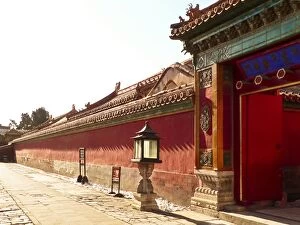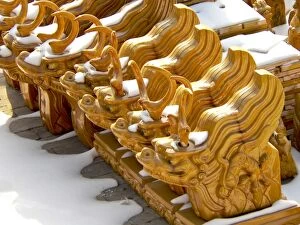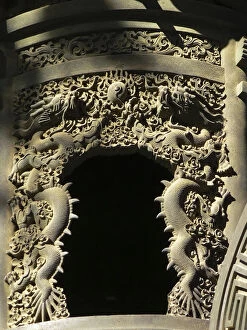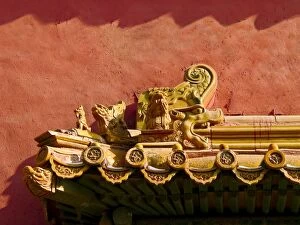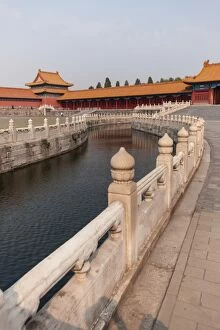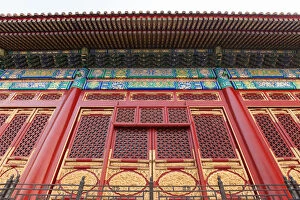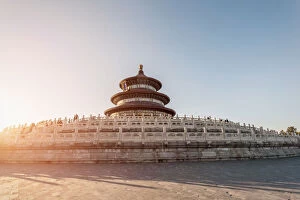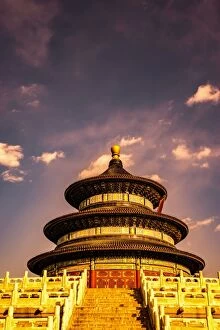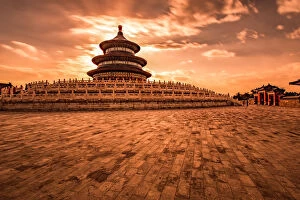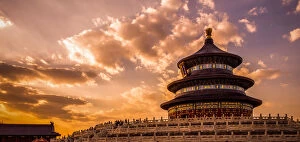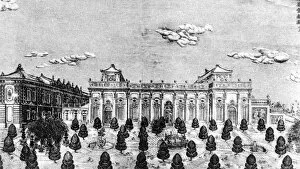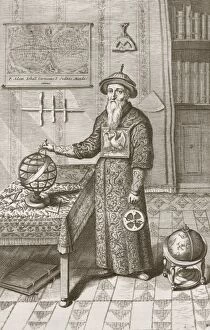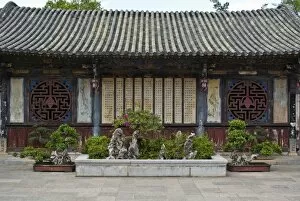Qing Dynasty Collection (#36)
The Qing Dynasty, also known as the Manchu dynasty, ruled over China from 1644 to 1912
For sale as Licensed Images
Choose your image, Select your licence and Download the media
The Qing Dynasty, also known as the Manchu dynasty, ruled over China from 1644 to 1912. During this time, the Far East was undergoing significant changes and facing various challenges. From 1900 to 1904, Tse Tsan-tai captured the situation in his artwork, providing a glimpse into that era. One of these artworks is "The Door-God - Military, " created in 1922 by an unknown artist. It depicts a powerful military figure guarding against potential threats during a tumultuous period. Similarly, "The Door-God - Civil" portrays another guardian figure responsible for maintaining order and justice within society. In contrast to these martial themes, "Lingering Garden" showcases the beauty of Suzhou in Jiangsu province. This garden exemplifies traditional Chinese landscaping techniques and serves as a tranquil retreat amidst the chaos of daily life. Moving on to Beijing's Temple of Heaven, we find an exquisite Chinese urn standing proudly in front. This sacred place played a crucial role in imperial rituals during the Qing Dynasty and remains an iconic symbol today. Artworks like "Landscape with Gibbons and Cranes" transport us back to the serene landscapes of ancient China. Painted during the 18th century by an unknown artist, it captures nature's harmony through depictions of graceful cranes and playful gibbons. However, not all art from this era focused solely on peaceful scenes; some explored more taboo subjects such as eroticism. An anonymous artist depicted an intimate encounter in their work titled "Erotic Scene, " giving us insight into societal attitudes towards sexuality at that time. Portraits were also prevalent during this period; one such example is the portrait of Qianlong Emperor As a Young Man from the 19th century. Although its creator remains unknown, it provides us with a glimpse into imperial power dynamics and aesthetics. Furthermore, everyday life was represented through paintings like "Interior with Woman, Child and Nurse.

